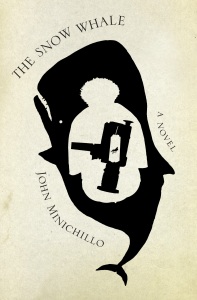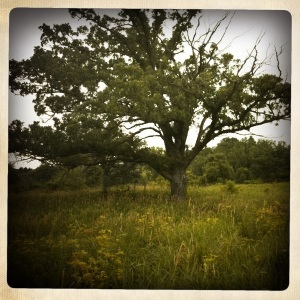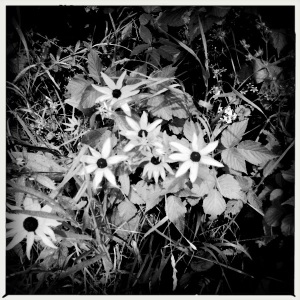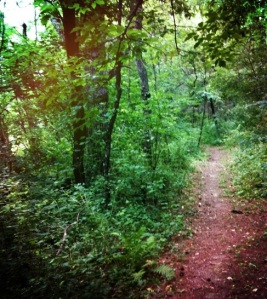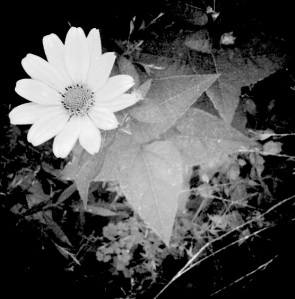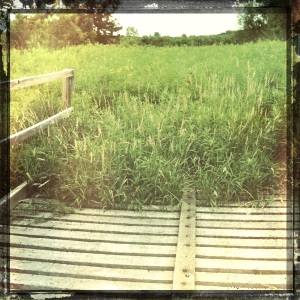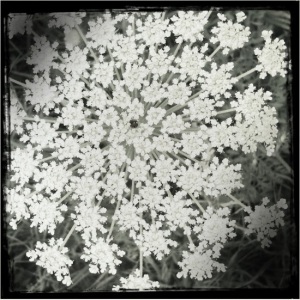Dave K recently released a collection of steampunk stories drafted and fine-tuned throughout his creative writing degree program at the University of Baltimore. He’s generously taken the time to allow me to interview him about his collection How To Stone A Pig, his writing process, among other interesting tidbits.
L^2: You have a unique writing style in How to Stone a Pig; it’s almost Victorian intellectual but modernized with interjections of blatant Gen-X vocabulary. In your own words, what was your literary angle?
DK: There are two angles at play with that, actually. I felt like a combination of semi-formal narrative voice and modern casual dialogue would be both a fun anachronism to play with and a way to build up the surrealistic tone that I wanted for this collection. Speculative fiction (or genre fiction, whatever you want to call it) is uniquely equipped to do stuff like that, so I wish more writers in that ouevre would take advantage of it.
The other angle is that I didn’t want readers to think I was trying to sound British. Most people associate anything Victorian with England, after all, and I wanted a more American sound to my work because that’s where I’m from and where I live. The best way to achieve that, I thought, was through informal, American vernacular dialogue.
L^2: Throughout your writing career, who have been your greatest influences and inspirations?
DK: The writers who’ve impacted my voice the most are John Bellairs, Robert Louis Stevenson, Philip K. Dick, Douglas Adams, Hunter S. Thompson, and Dave Barry. I’ve made it a point in recent years to build up a more diverse reading list, but those six guys grabbed me early.
My inspirations aren’t writers at all, for the most part. A lot of them are musicians: Jello Biafra, Henry Rollins, and Lemmy being the dominant three. I like people who are stubborn and unorthodox and get away with it without sacrificing their curiosity along the way (which is why G.G. Allin is not on this list). There are some visual artists who stir something up in me, too; Edward Gorey is a big one, as is Ralph Steadman, and I really like J.M.W. Turner’s work, even the more Impressionistic stuff he did late in his career.
L^2: Who are you reading now and name the last 3 great works you’ve read, and why.
DK: Right now I’m working on my friend Justin Sirois’ book, Falcons On the Floor, and also reading Ekaterina Sedia’s The Secret History of Moscow. They’re both fantastic.
As far as great works go, I’ve been singing the praises of Chimamanda Adichie’s Half of a Yellow Sun to everyone everywhere – the prose is both gorgeous and graceful. Ander Monson’s Other Electricities is also a phenomenal book; the structure is as poetic as the content. And while it’s not a novel or even a piece of fiction, Michael Azerrad’s Our Band Could Be Your Life is a thumping good reminder that you don’t need traditional channels of patronage and distribution to be a working artist. Hell, you can even be riddled with insecurities and behavioral disorders and still make a go of it.
L^2: How has your formal education at University of Baltimore in Creative Writing and Publishing changed your approach to writing? The publishing industry?
DK: Well, it broke any lingering desire I had to work in the publishing industry, that’s for sure. But my MFA program introduced me to a lot of people who believed in my work and helped it grow. I don’t absolutely have to write from anger or cynicism anymore, as I once did, and it’s much easier for me to draw inspiration from other things (music, visual arts, etc.) now. To paraphrase Garrison Keillor, I have a lot more keys on my piano these days.
Most importantly, my MFA program helped me really enjoy writing. I went through a phase where I was pretty bitter toward it, because I felt like I wasn’t good at much else and had therefore been shanghaied by fate into writing. I feel much differently now. There’s more joy in my process now than ever before, and that makes it a lot easier to tell stories.
L^2: As a writer, describe your writing process.
DK: A lot of things change depending on what I’m working on, but I tend to be a night owl who doesn’t start writing until well after dark. I need to listen to music while I write, and lately I’ve been exploring experimental/ambient music; lots of soundscapes and long, droning instrumentals. What I’m listening to has a direct effect on my narrative voice, so it’s fun to listen to different things and pick out the changes they make in my writing.
I also have trouble concentrating in my apartment, so I often go elsewhere to write. Coffee shops and libraries are my go-to places right now.
L^2: There are some creepy and somber photographs woven in between each piece of How to Stone a Pig. Did you create them? What were you trying to highlight by placing them where you did in the collection?
DK: I did create those images, yes. They’re a mix of public domain photography, stock photos, hand-drawn stuff, and clip art, all fed through Photoshop sketch filters and layered with grunge textures to give them a worn-out, used look. I really like combining text and image – it brings me back to being a kid and tearing through John Bellairs books so I could look at Edward Gorey’s weird, wonderful illustrations.
Creating those images helped my writing, too. It’s easier to find the right words for things when you’re seeing what your characters see, and I’d like to think the images contributed to the overall mood of the collection.
L^2: Some of us are familiar with the genre of “steampunk,” for those who aren’t, would you mind explaining the genre?
DK: Steampunk has a lot of definitions, but I like to think of it as science fiction set in the Victorian/Edwardian era. Victorian interpretations of fashion, technology, art, politics, and culture are centerpieces of the genre, to the point where it can veer into alternate history at times. There’s also a pervasive man-against-the-world element to steampunk protagonists, which is where that “punk” part comes in, as well as a sense of optimism about human potential.
That said, a lot of steampunk literature is overly focused on the technology and aesthetics, and so there’s a lot of empty, rich-guys-in-airships fanservice as a result, but it’s such a clever and provocative setting when it’s done well.
L^2: I recall you mentioning that this collection was part of your thesis. Can you tell us about the journey to getting it from concept to print?
DK: All the stories in the collection were written at various points during my time in the program, and the first semester of my final year was an advanced fiction workshop where my classmates and I wrote some new stories and revised old ones and put together the manuscripts that would become our self-published books. The following spring was the thesis semester, where we all revised our manuscripts, thinking of them as whole collections rather than just clumps of stories.
Once my manuscript reached the point where my advisor signed off on it, I got to work designing the thing. Page size and layout, margins, typeface, all that stuff. I also designed the cover. That whole process was grueling, but I imagine it would be a festival for someone more OCD than me – there are so many mental doorknobs to touch, and the Adobe suite just enables that tendency in people.
My book design had to be approved as well, and I contacted a printer once it was. That was the most stressful part, honestly. Not because of the printer, but because that was the first time the book was actually out of my control, and they were far enough away that I couldn’t watch them physically assemble the books to make sure they didn’t do anything wrong. It was like sending my manuscript to summer camp for the first time and hoping the counselors would keep it from drowning or being eaten by bears or something.
When the books arrived, it took me a minute to accept that they were real, that all the stress and fatigue and countless hours of resetting paragraph indents and making Photoshop collages finally had a real, physical presence. I’ve never been prouder of anything in my life.
L^2: Big thanks to Dave for taking the time to chat. I’ve also highlighted a few of my favorite stories below of How To Stone A Pig in a flash review.
One of my favorite stories was How to Adopt a Cat, a story written in a somber, almost sedated tone, fitting of the protagonist’s state of mind post-psyche ward release. He touches on what it’s like to feel like an outsider in the “outside world,” and how the hustle of passersby created a deep-rooted anxiety for the protagonist. One of my favorite passages is: “When the conductor passes by and tells me my stop is next, I can only nod. My speech has slurred during the years, and I’m hesitant to converse above my station. When he leaves, I pat myself down to make sure I still have my papers, that none of them have fallen out of my pocket, that I am real and solid and free of that wretched place.”
My other favorite was a disturbing piece titled The Experiment, a story that draws on the haunting and eerily creepy images of a man strapped down and electrocuted by a sadistic doctor without concern for safety or well-being of his subject: “Few words native to English or any other language are fit to describe how Mr. Crisp felt. Suffice it to say that the second-to-last thing coursing through his mind was a brief, white-hot, explosive realization of complete and total independence from everything. He flushed numb from fingertips to brain as electricity folded him into thin, sharp creases. The last thing to go through his mind, of course, was the fatal shard of current that popped his eyes like paper bags.”
There is inherent melancholia woven into Dave’s mature writing and bizzaro story lines. Reading this collection induced occult sensations, and though I was not always 100% certain about a story’s intent or direction at times, the literary ride was a psychedelic journey, and one worth taking a few times over. Check out his collection in limited availability here: www.beeohdee.blogspot.com
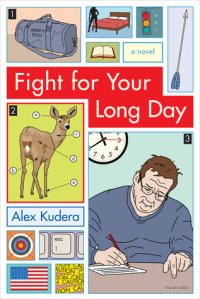 Cyrus Duffleman is an adjunct university professor fighting to reach the end of what seems like the single longest day of his life. From dawn till midnight, he sprints amongst four different educational institutions where students test his patience levels–particularly the ones with a raging sense of entitlement and blind patriotism–and where tragedies such as suicide and murder go down. In the rare moments when Duffleman does catch a breather, he can’t help but stress about his financial limitations, school administrative bureaucracies, and on a more personal level, crippling loneliness, which emerges in his daydreams of what-if scenarios.
Cyrus Duffleman is an adjunct university professor fighting to reach the end of what seems like the single longest day of his life. From dawn till midnight, he sprints amongst four different educational institutions where students test his patience levels–particularly the ones with a raging sense of entitlement and blind patriotism–and where tragedies such as suicide and murder go down. In the rare moments when Duffleman does catch a breather, he can’t help but stress about his financial limitations, school administrative bureaucracies, and on a more personal level, crippling loneliness, which emerges in his daydreams of what-if scenarios.